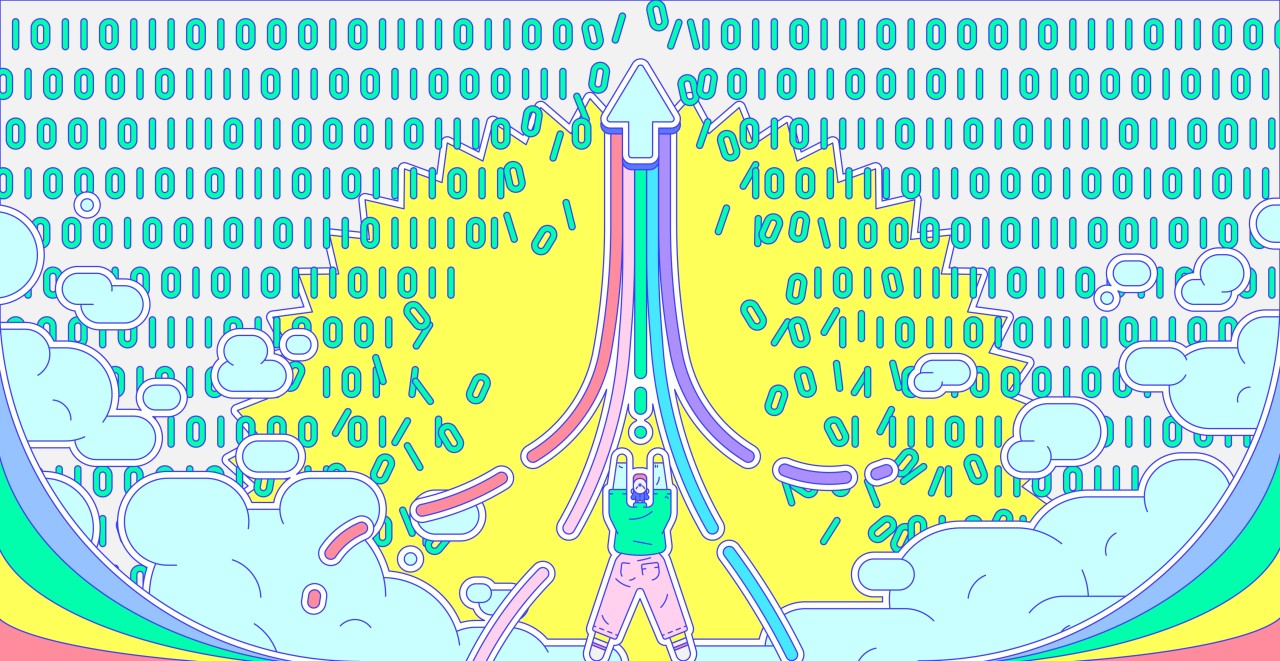
"No Code" is great. But here's why we need *Yes* Code.
The hardest part about creating with code isn’t the code.
For years, people in the tech industry have talked about “No Code” — tools and services that let you build a website or an app just by clicking or tapping, without having to know how to write code. If you’ve listened to a podcast in the past few years and heard “we’ll help you build a great website just by picking a beautiful template,” then you know what we’re talking about. The idea of empowering more people to create is a profound and important one.
But as great as these No Code tools are, there are lots of meaningful problems, and joyful creations, that can only be addressed by writing code. We need Yes Code.
What is "Yes Code"?
Yes Code is based on three key ideas:
- There are millions of important apps, websites, and projects that can't be made by an off-the-shelf template
- Being able to code is a superpower, and we should enable more people to tap into that ability, by lowering the barriers
- The biggest barriers to coding are technical complexity around processes like collaboration and deployment, and social obstacles like gatekeeping and exclusion — so that's what we've got to fix
In addition to the existing global community of tens of millions of developers around the world, there are countless millions more who might not have "engineer" on their business card, but who have valuable skills that Yes Code can amplify. Back in the 70s and 80s, millions of people learned to program on the home computers they bought. In the 90s and 2000s, tens of millions of people made websites and learned HTML from the early web communities and social networks. But even though MySpace faded into obscurity, there are millions of people around the world who've got the skills to tweak an app or website into what they need — if they've got the right tools, and the right community, to help them do it.
It's time to say Yes
Today's internet isn't fully serving the needs of a lot of people around the world. There may be great tools for sharing a photo or sending a message, but most of the sites and apps we use every day are made by a small number of companies with goals or incentives that might not match our own. We're feeling the negative effects of that reality every day.
Ask yourself: When’s the last time you used an app, or visited a website, that was made by an actual individual person? How many of the tools you use at work, or apps you spend time on for fun, come from a community that you're part of? If you’re a coder, when’s the last time you just quickly built something to solve a problem for yourself or simply because it was a fun idea? It’s as if the only option we had to eat was factory-farmed fast food, and we didn’t have any way to make home-cooked meals. We need more tools to create a web that is made by, and made for, humans. That human web has disappeared because it got too hard to just create things on the web. Building and sharing an app should be as easy as creating and sharing a video.
A No Code tool can make it easy to update a marketing website or to connect two common tools together. But a Yes Code tool can create something unexpected, can talk to a legacy system that hasn't been updated in years, lets you try out a brand new framework or technology that you're discovering, and lets you reuse the billions of lines of code that already exist in the world.
At Glitch, we’re leading the way in Yes Code by building both an incredibly simple way to instantly create and launch apps on the web, as well as a brilliantly creative community to help share, amplify and remix those apps. The end result is an explosion of both creativity and productivity, yielding millions and millions of apps that solve real problems or bring real joy to people, and all of it is created quickly and easily by regular people like you.
All this creativity has been unleashed because developers are now able to make an app live instantly, instead of wrestling with the complicated world of deployment and provisioning and orchestration and dependencies that has been foisted on coders over the years. And the other part of the equation is a friendly, welcoming community where we recognize that, if we can all learn from each other and build on each other's work, we can tear down the barriers that have kept so many from being included in the world of coding.
Today's No Code tools will undoubtedly help build the new human web — we're inspired by the creativity they've unlocked, and the people they've empowered. But we also know there's another half to the equation. There are cutting-edge areas like machine learning and bots and augmented reality that will never quite fit into a template, and there are millions of coders around the world who want to work together to put their unique coding superpowers to use for solving meaningful problems at work, at home, or in society.
For all those creators, we're building a Yes Code community and leading an effort to truly tear down the barriers around code. If that sounds like a vision you want to be part of, come join us in the Glitch community — we can't wait to see what you create!

